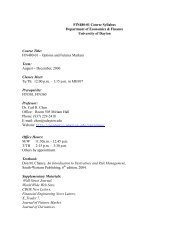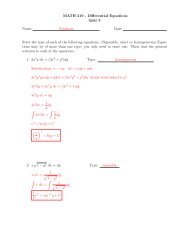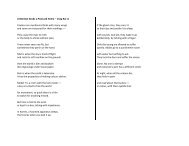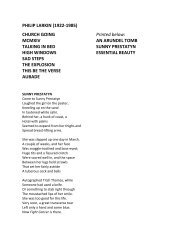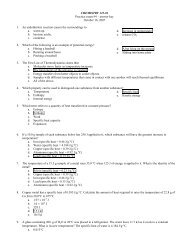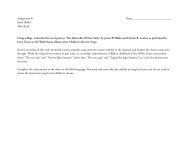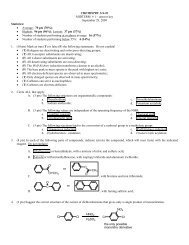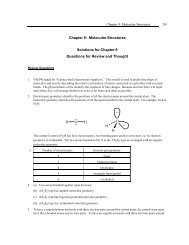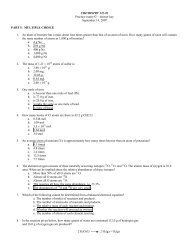Chap 26
Chap 26
Chap 26
You also want an ePaper? Increase the reach of your titles
YUMPU automatically turns print PDFs into web optimized ePapers that Google loves.
MONEY, BANKS, AND THE FEDERAL RESERVE 231<br />
Overhead Transparencies<br />
Transparency Text figure Transparency title<br />
59 Figure 10.1 Two Measures of Money<br />
60 Figure 10.2 The Multiple Creation of Bank Deposits<br />
61 Figure 10.4 The Structure of the Fed<br />
62 Figure 10.7 The Multiplier Effect of an Open Market<br />
Purchases<br />
Electronic Supplements<br />
MyEconLab<br />
MyEconLab provides pre- and post-tests for each chapter so that students can assess their own<br />
progress. Results on these tests feed an individualized study plan that helps students focus their<br />
attention in the areas where they most need help.<br />
Instructors can create and assign tests, quizzes, or graded homework assignments that<br />
incorporate graphing questions. Questions are automatically graded and results are tracked using<br />
an online grade book.<br />
PowerPoint Lecture Notes<br />
PowerPoint Electronic Lecture Notes with speaking notes are available and offer a full summary of<br />
the chapter.<br />
PowerPoint Electronic Lecture Notes for students are available in MyEconLab.<br />
Instructor CD-ROM with Computerized Test Banks<br />
This CD-ROM contains Computerized Test Bank Files, Test Bank, and Instructor’s Manual files<br />
in Microsoft Word, and PowerPoint files. All test banks are available in Test Generator Software.<br />
Additional Discussion Questions<br />
11. Why is the use of money in the exchange of goods and services less costly than using barter?<br />
12. “Everyone knows that true money is issued by the government; that is, the only real form of money is<br />
the nation’s currency.” Comment on this assertion.<br />
13. Why do we need different types of depository institutions? Would the nation be better off if, say,<br />
S&Ls became more like banks? Defend your answer.<br />
14. Currently deposits in banks pay approximately 3 percent. Yet people borrowing these deposits from<br />
banks pay approximately 9 percent. Why don’t people making deposits in banks get together with<br />
people borrowing from banks and “split the difference” between these rates? For instance, a loan<br />
could be made at 6 percent so that the lenders (the former depositors) receive 6 percent rather than 3<br />
percent and the borrowers pay 6 percent rather than 9 percent.<br />
15. What are required reserves, actual reserves, and excess reserves? How much in excess reserves do you<br />
think a bank wants to keep on hand? (Bear in mind that excess reserves earn no interest income.)<br />
16. How does a currency drain affect the money multiplier?




